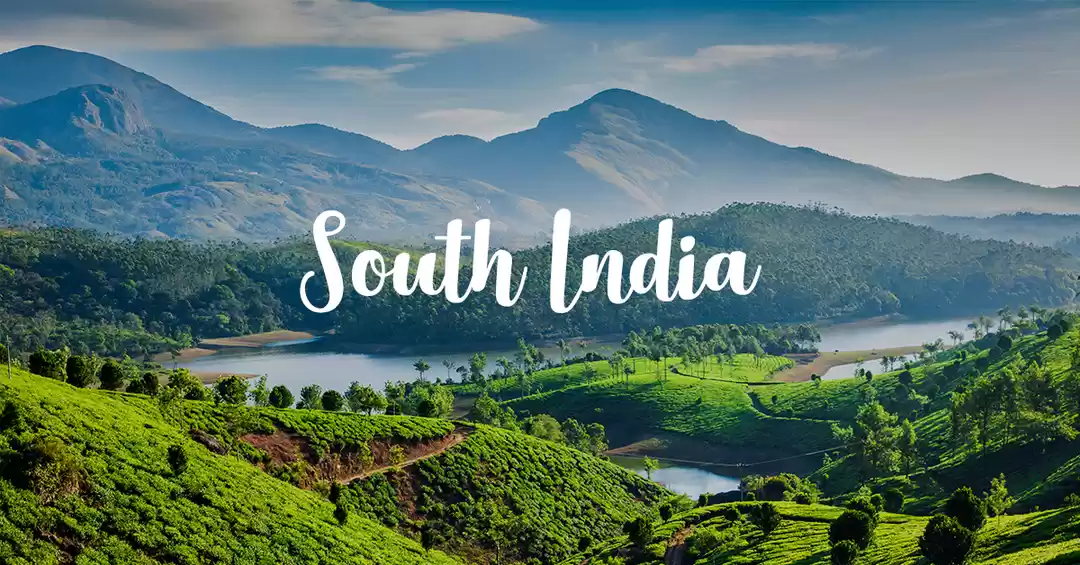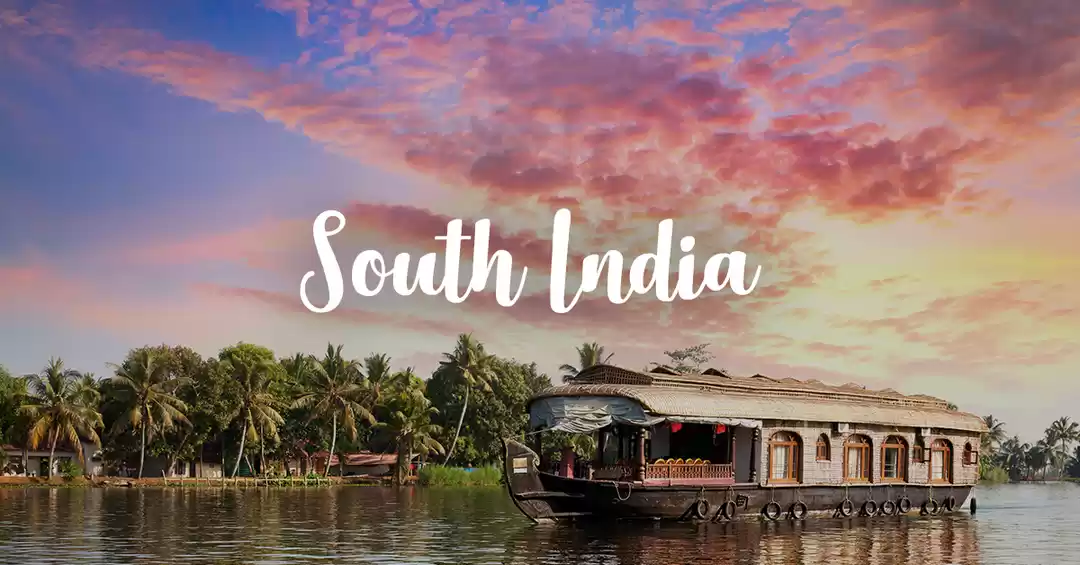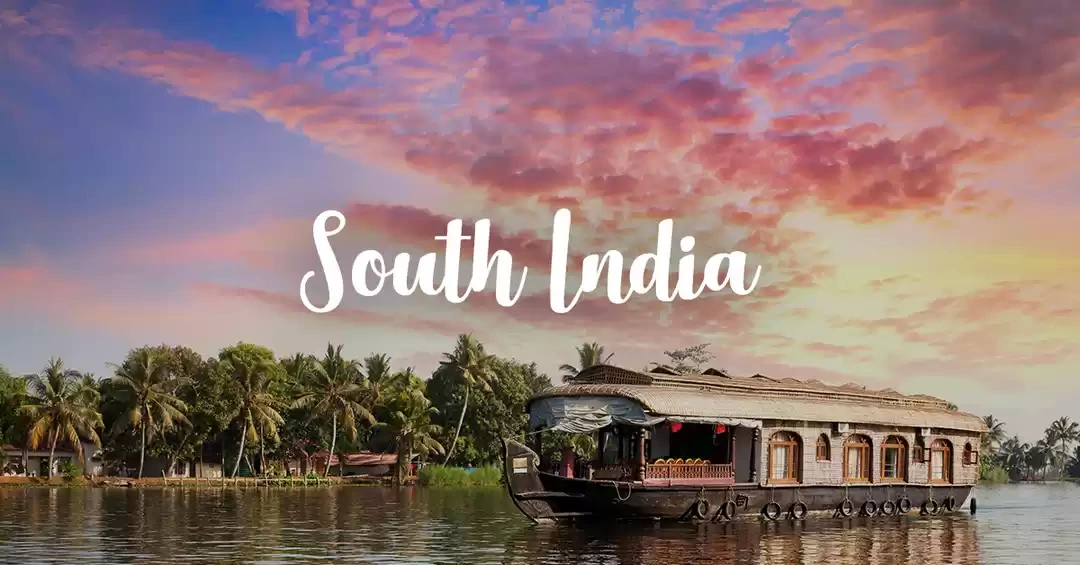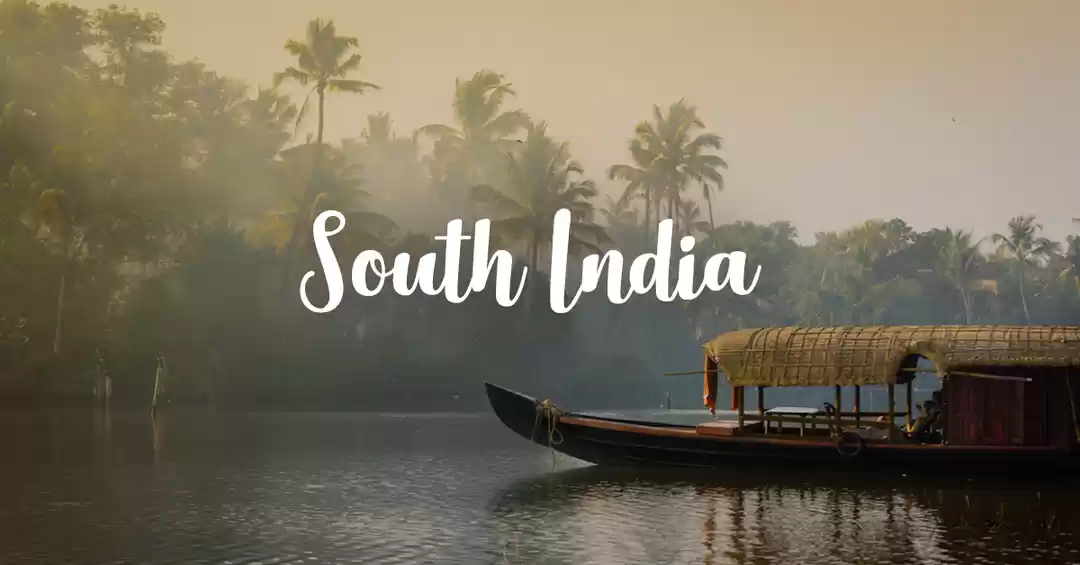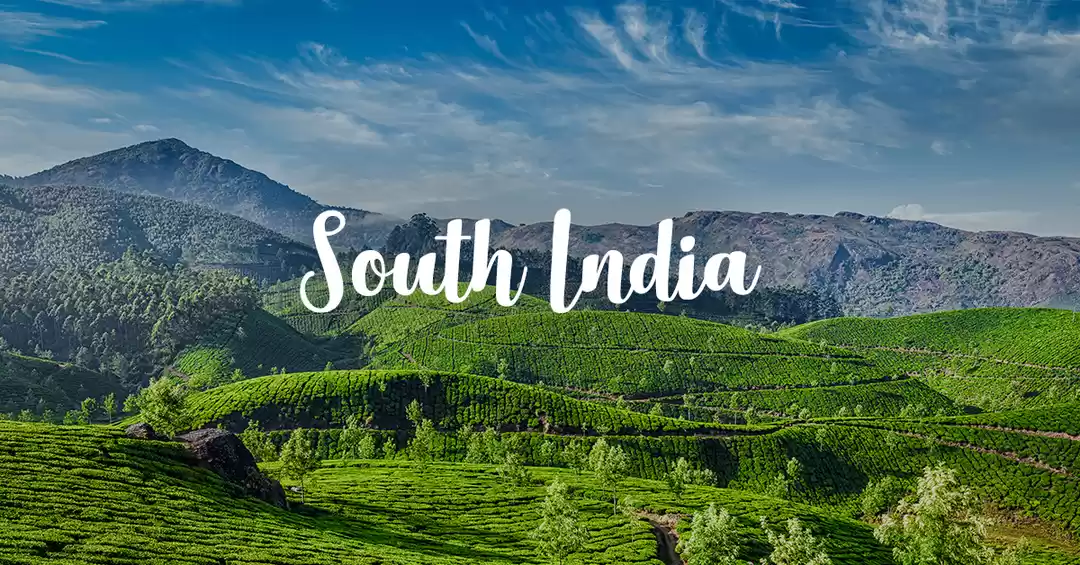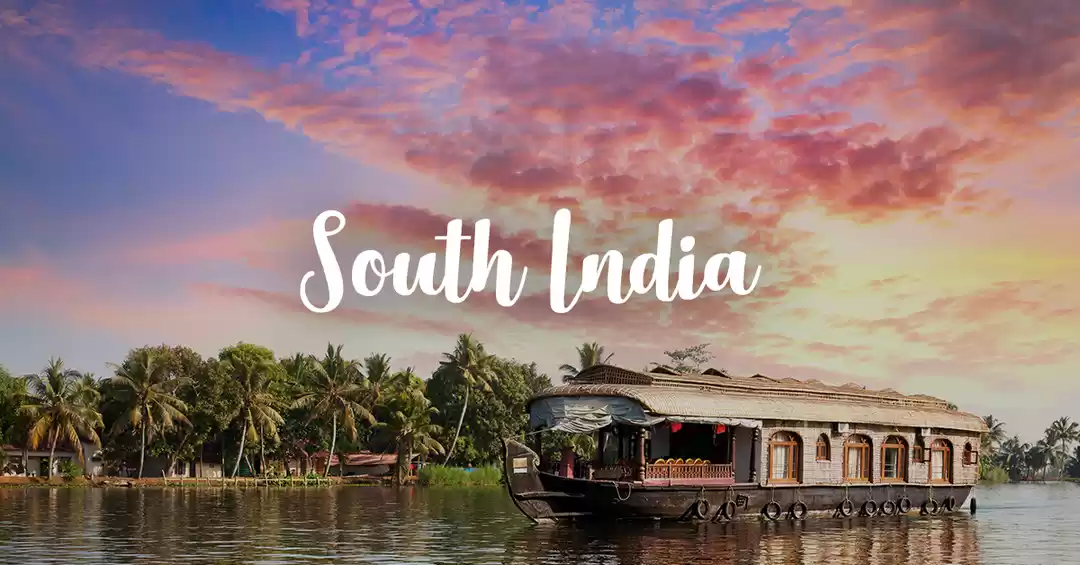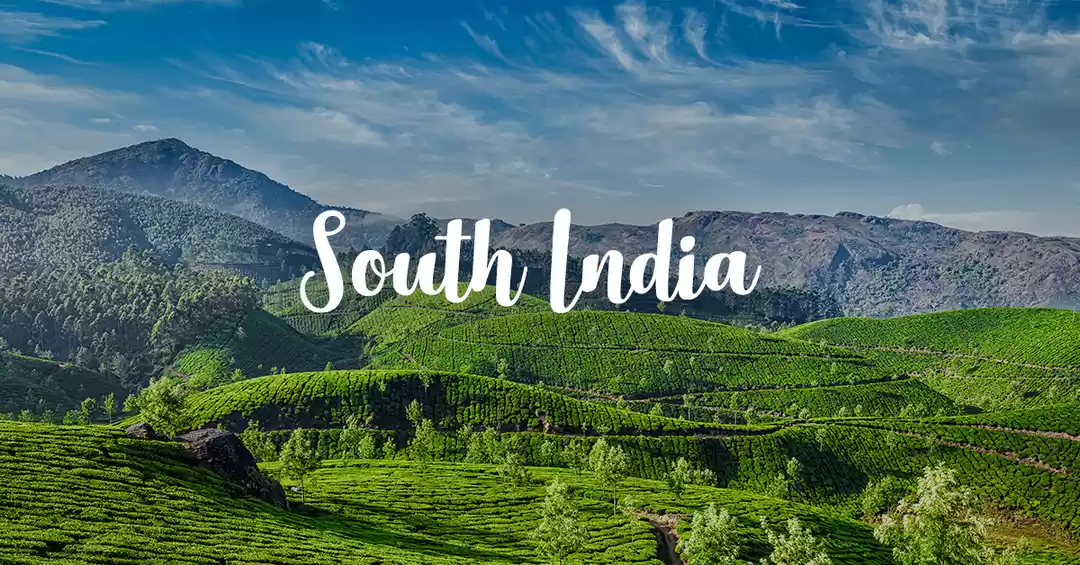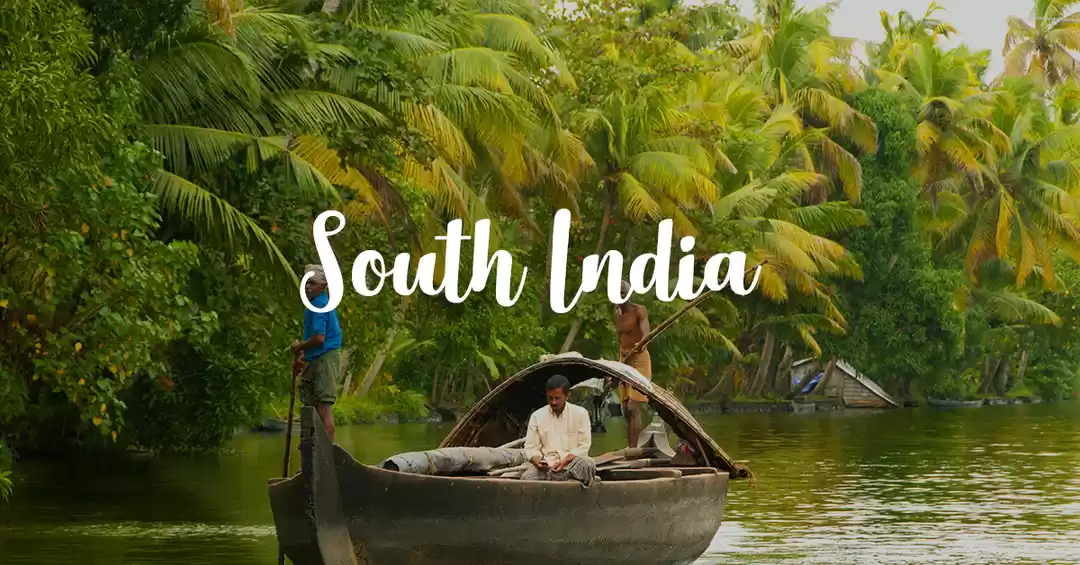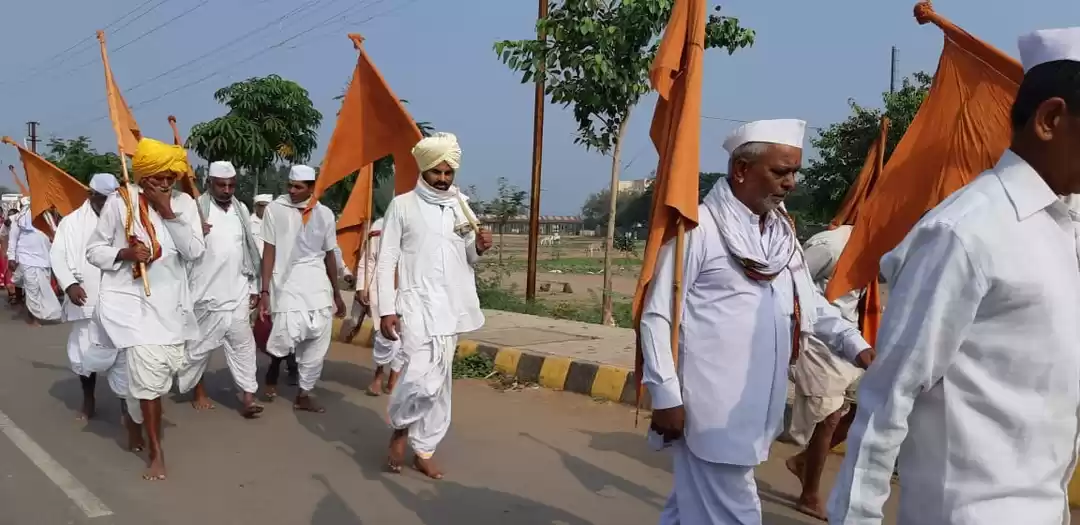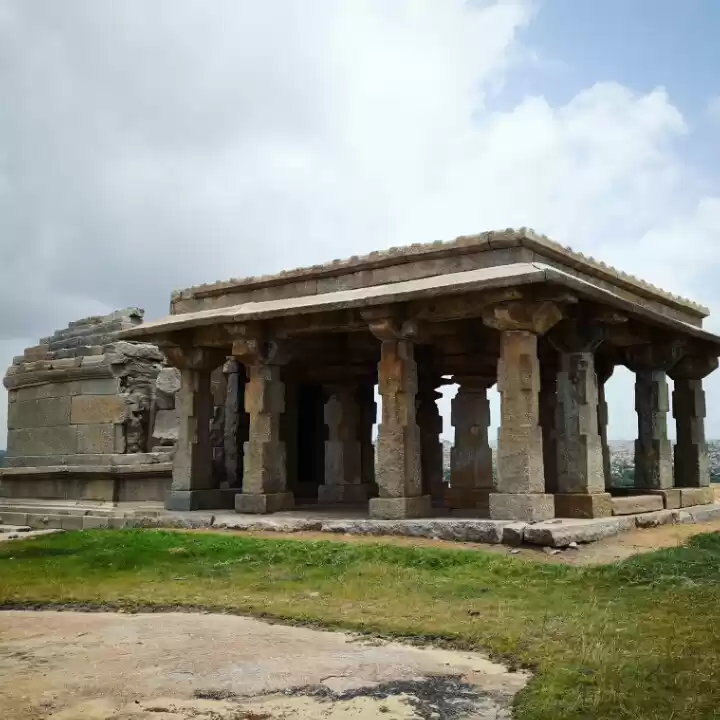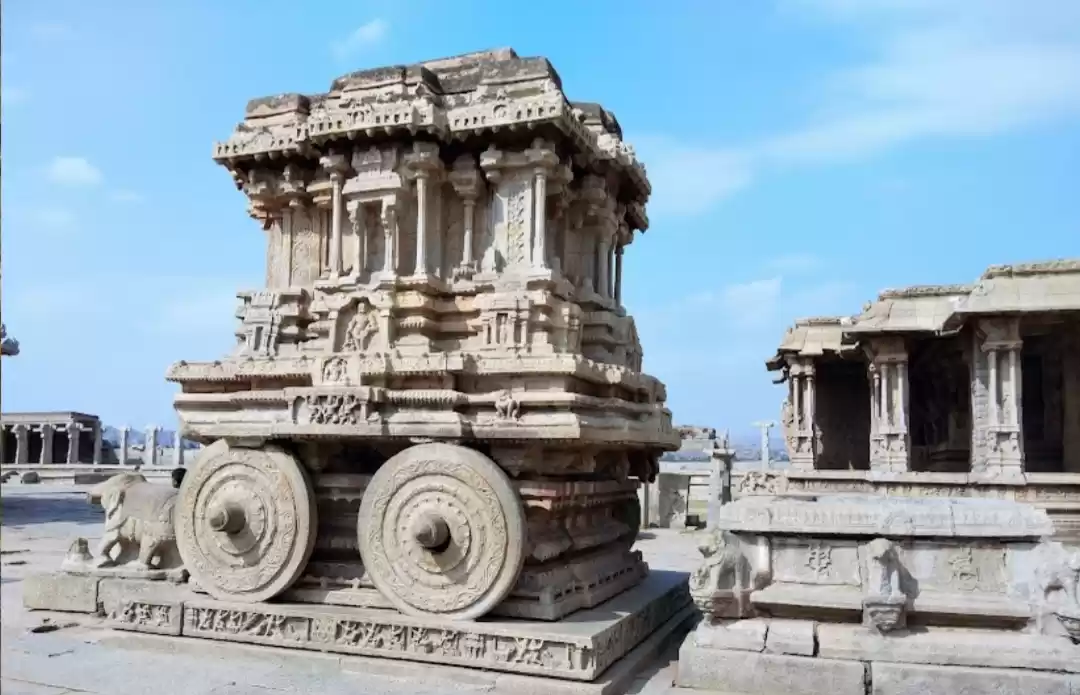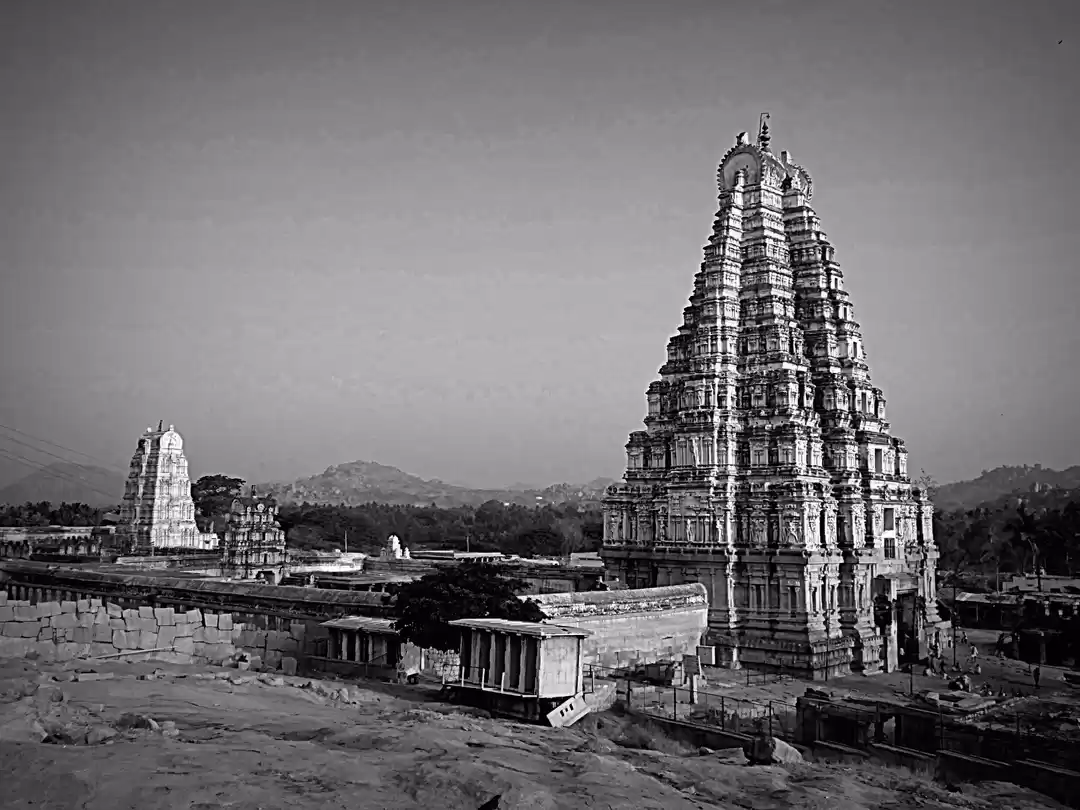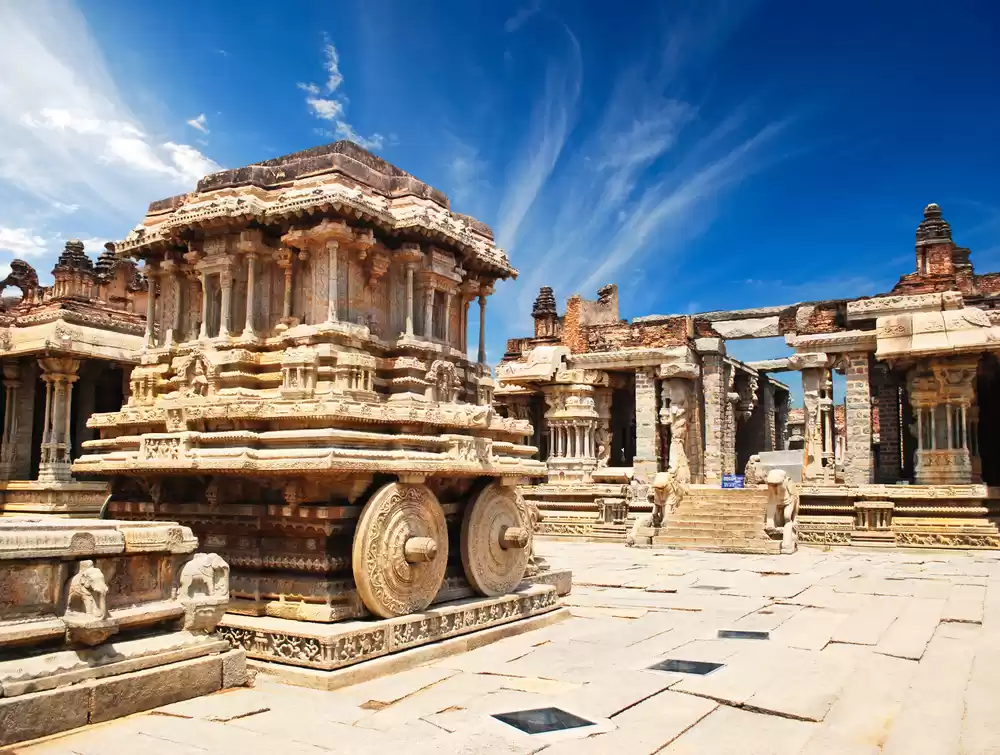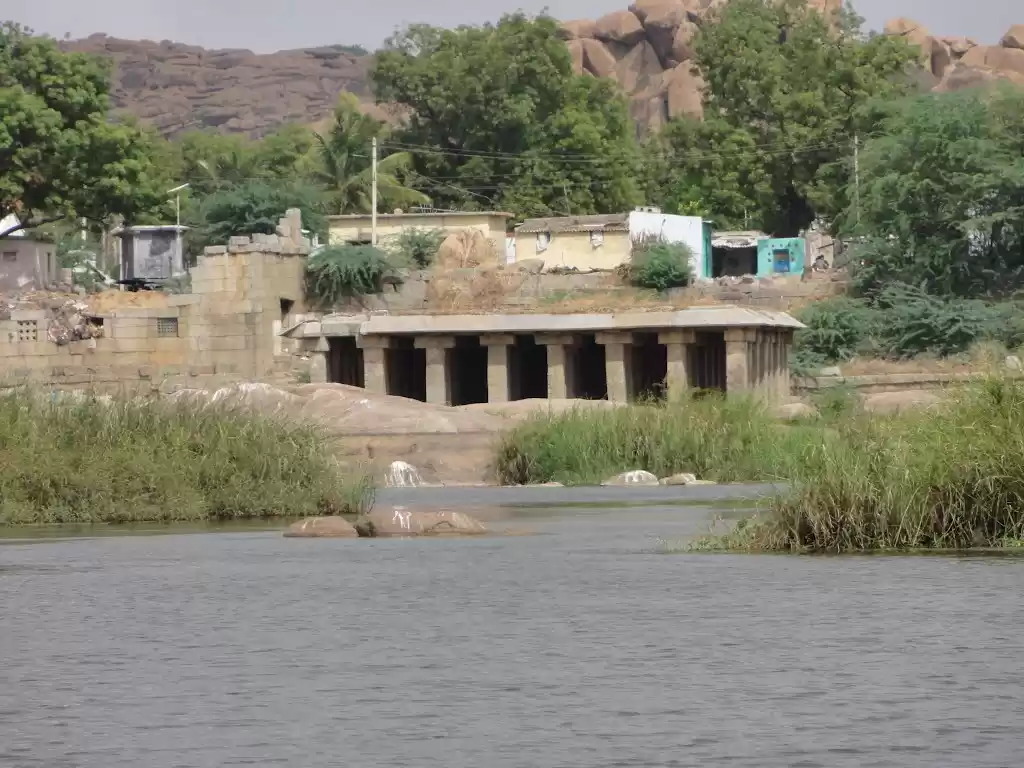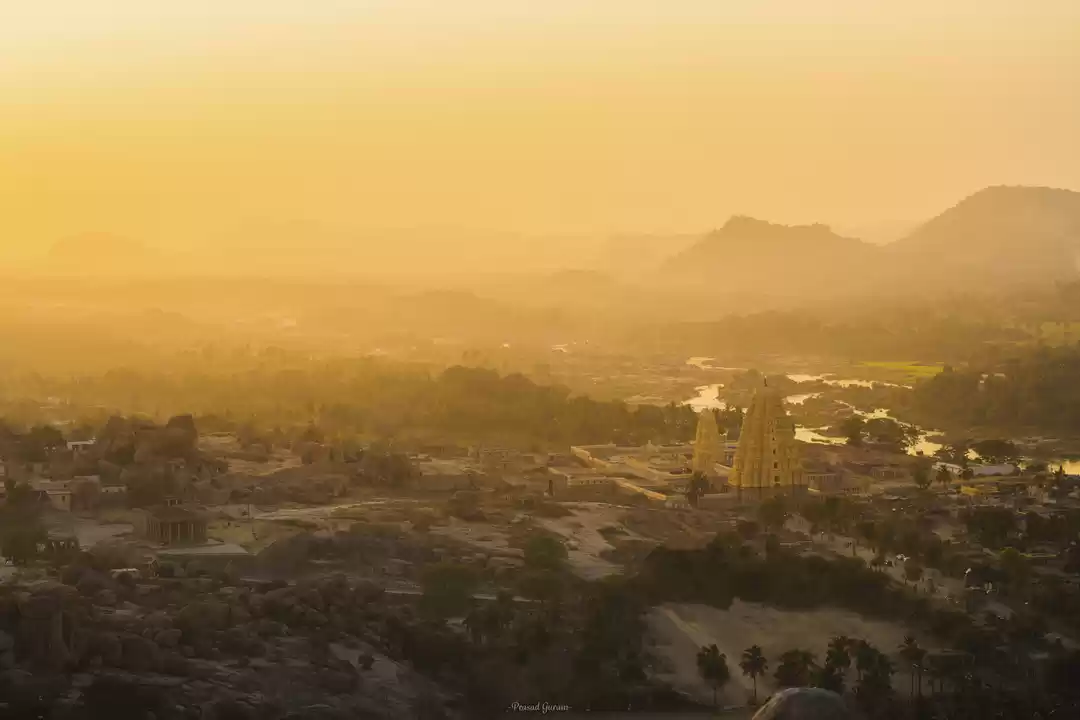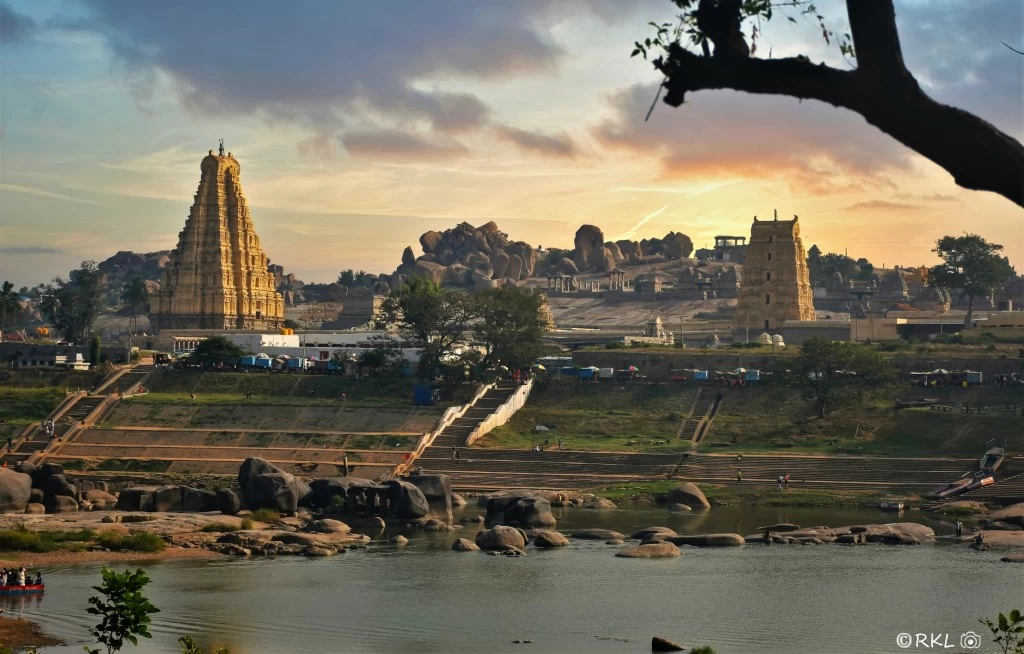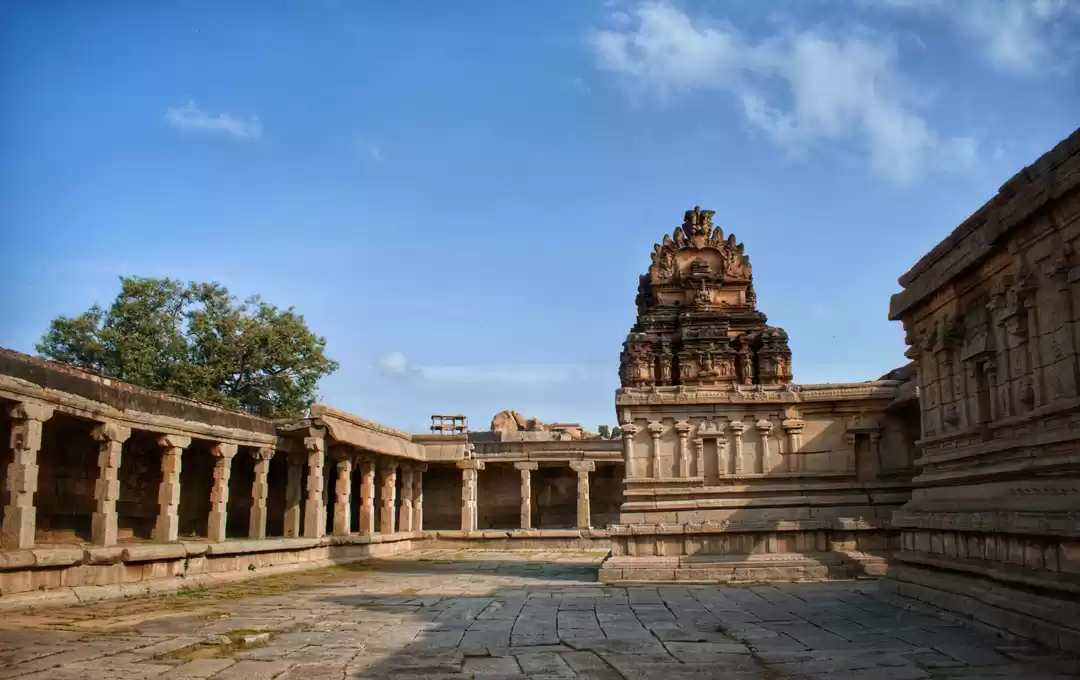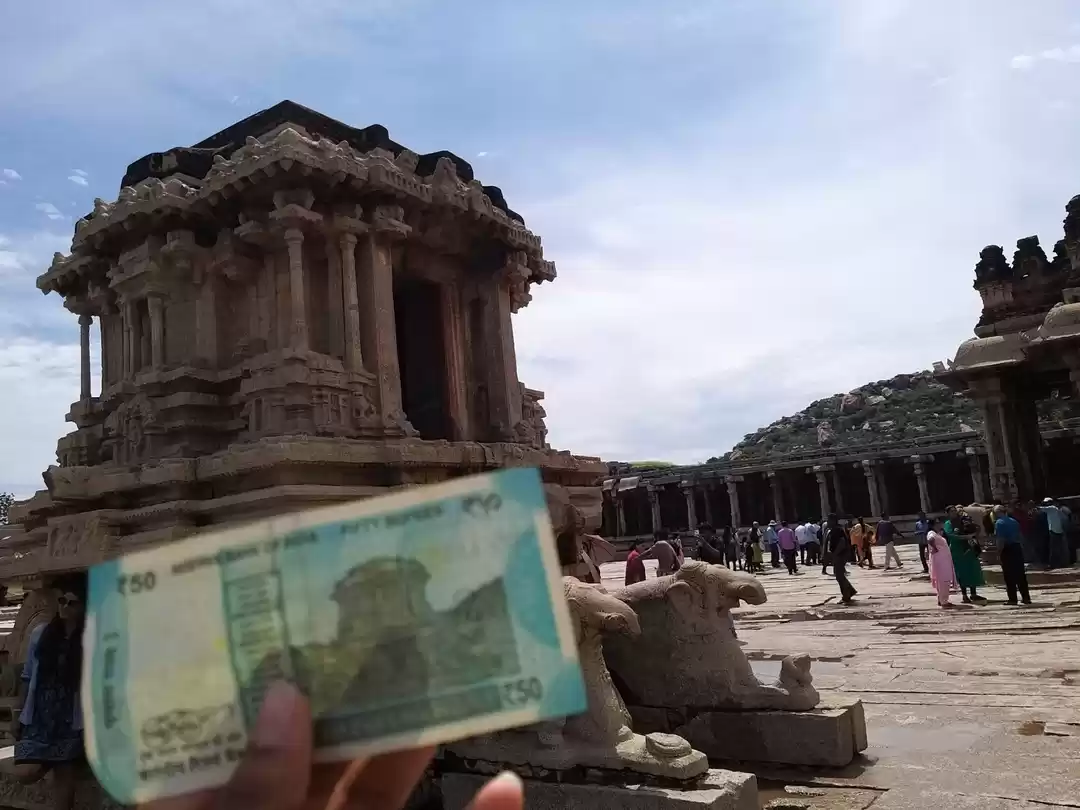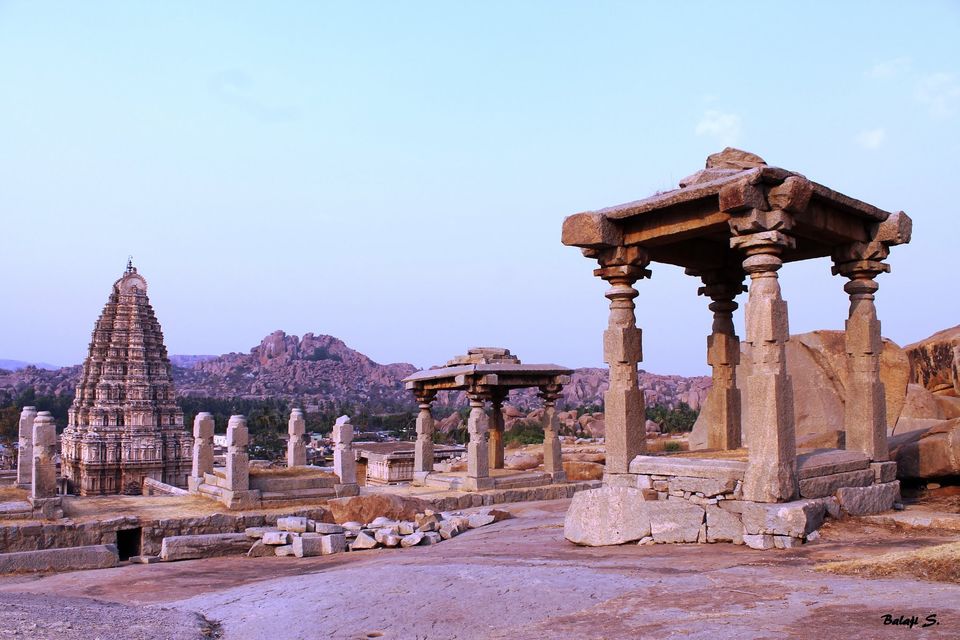
Hampi took my breath away. Yes, I expected lots of ruins, but not such expansive ones, each one with a character of its own. The hillsides surrounding Hampi are mounds upon mounds of rocks, studded with abandoned mantaps that look like they might topple anytime. It was surreal.
The ruins in the southern part of the Tungabhadra are divided into two major regions - Sacred Center and Royal Center. North of the river lies Anegundi. Walking around these ruins, it was easy to imagine myself living here 500 years ago. On one trail I was a princess sashaying down a pathway filled with adoring subjects, at another I was a peasant selling my wares at the morning market in the shadow of the Krishna Temple. Oh, the possibilities were endless!
This setting was an excellent opportunity for great photos that catch the morning and evening light. It takes a little bit of hard work, but the rewards are three-fold. One, you get great photos in great light. Two, you escape the heat of the day. Three, you get people-less photos of these magnificent ruins. Here is our photo essay, dedicated to the beauty that is Hampi!
Courtesy for all photos: My significant other @bsridharan
Pune ---> Bijapur ---> Hampi
We stopped by Bijapur to see the magnificent Gol Gumbaz. This striking tomb of Mohammad Adil Shah is five hundred years old, and is an ode to the Deccan Indo-Islamic architecture which mixed the Dravidian style with the Islamic style. So magnificent was it in its day that it was termed the Taj Mahal of south India. There's a Whispering Gallery on the first floor. It was eerie but brought out a childlike joy in both of us as we clearly heard what was being whispered on the other side of this massive dome!
We reached Hampi by afternoon but we headed out the sights only by evening since we wanted to catch the sunset light. Our first stop was the towering Virupaksha Temple which anchors the Sacred Center. Still a working temple, it houses a courtyard and three antechambers. It is also home to a bunch of monkeys, some of the biggest I've ever seen!
The Hemakuta Hill sits right next to the Virupaksha Temple and offers panoramic views of the ruins all around. It is sprinkled with canopies, pavilions and mantaps and we spent a long time just wandering in and out of these. At the bottom of the hill are a couple of impressive Ganesha temples.
We began our morning at 6am at the Royal Center to catch the sunrise light. The Royal Center is an intriguing mix of Hindu and Islamic architecture. There are domed watch towers, haunting remains of a mosque and also the Hazara Rama Temple. It is a fascinating play between the architecture of the resident rulers and the eventual conquerors.
Just north of the Royal Center is the Zenana Enclosure, a private enclosure for the Queen and her women. While only the basement of the Queen's Palace remains, the Lotus Mahal at the corner is the structure that stands out.
Next to the Zenana is the imposing Elephants' Stables. As we walked here, dwarfed by the sheer size of these stables, we could well imagine these gentle beasts of burden sheltered here and being treated like royalty themselves. I love gigantic structures, and these were a treat!
It was almost 9am, and time to call it a morning! In these three precious hours, we had covered a large part of the Royal Quarter in excellent weather and got a few beautiful shots with the morning light. And the most fun part was that we had these huge ruins all to ourselves since we beat the crowds, erm, royally (pardon the pun!). Now that's a good thing for any photo in Hampi. The sights are so ethereal that you strive for people-less photos, so that there's no giveaway that we are in the 21st century :) On the way back to our hotel in Hospet, we stopped by the Underground Shiva Temple, a large area sprinkled with Shiva Temple ruins.
As the sun began to let up on his heat around 4pm, we ventured out on our second shift of the day. This time, our destination was the Vitthala Temple, not by the main roads but through a back country trail which would take us on foot through ruins accessible only on foot. The trail-head lies at the end of the Hampi market, near the monolithic bull. Here's a tip - take lots of water, maybe even ORS. And don't stay in the back county trails after dark. There are no lights to light your way, it will be dark like it was in its original setting in the 1500s!
Our first descent brought us to the sprawling Achutaraya Temple Complex. The courtesan street leasing away from it felt ceremonial, reagal paraphernalia like elephants, umbrella bearers and conch blowers came alive in my head as they lined the streets and let me pass through. Our next stop was the Pushkarni Lake, empty but oh-so-pretty.

Finally, we rounded a bend and caught our first glimpse of the Vitthala Temple. It was every bit as magnificent as all its descriptions. The most ornate of all of Hampi's standing structures, it is filled with pillars of different kinds, each more intricate than the other. The musical pillars were closed the day we went, but it is off limits to the public to use them due to fear of overuse. The famous chariot shrine also could be moved but has now been cemented to the ground.
We retraced our path, but inked in a short cut by the river to reach the Hampi Bazaar road much faster.
6am start again today! We headed back to the Royal Center to catch the sunrise, and then wandered around to the other spots.
Our first stop was the stepped tank, so surprisingly symmetric and visually pleasing that we tried to take photos from all angles till the guard chased us out! Used by the royals for religious purposes, it has an aqueduct emptying into it, although trying to explain the precise reasons for constructing it this way are still debated. Never mind the reasons, its a visual treat!
We then climbed up the Mahanavami Dibba. This 12m high sprawling platform is from where the king used to watch processions and the famous Navaratri performing arts displays. I couldn't help but break into a little dance here, pretending that there was a king watching me and a raucous crowd cheering me on. Let's face it, it was 6:30am so there wasn't another soul there to jeer (let alone cheer) except B who put up with my imaginary concert.
After my little jig, we drove down to the Queen's Bath. This structure is simple from the outside but surprisingly ornate from the inside. We lingered to admire the Indo-Islamic balconies and domes overlooking the large pool in the middle which is open to the sky. We could almost hear the sparkly laughter of the Queen and her attendants as they prepared for their evening of indulgence.
It was time to call it a morning again! We followed our unique idea of resting for the day as the sun beat down outside (a big buffet breakfast, a nap and lots of journaling included!).
Later that afternoon, we headed to Anegundi across the Tungabhadra. Unless you're a fan of working temples, Anegundi is just a smaller version of Hampi's main sights. What caught our attention was the pristine green paddy fields, a stark contrast against the earthy browns that had filled our senses for two days. We drank in this prettiness by the Hacchappa Mahal.
Back in the southern ruins, our last stop for this trip was in the southwest corner of the Sacred Center.
The Narasimha Temple is indeed unique. As much as we had stared at all its pictures on the net, it did not prepare us for the one of a kind expression that we saw in person. We couldn't tear our eyes from it, its sheer size and uniqueness was captivating.
Right next door was the Badava Linga, a unique enclosure that fit the linga like a glove! The one little opening in its roof lends it an ethereal look.

Next, we went to the imposing Krishna Temple and the Krishna Complex right next to it. The latter was used as a market five hundred years ago. We sat there for a long time watching the sky light up in sunset colors and it was easy to imagine myself as a peasant woman selling her wares to the faithful every evening. The Krishna Temple was resplendent in the evening light.

It was time to catch the sunset, and for this we headed to Hemakuta Hill. We walked further along the path away from the main crowds and found ourselves a quiet spot. We also found an enterprising tea seller to round out our evening of bliss with nature and the ruins of hundreds of years surrounding us.
























